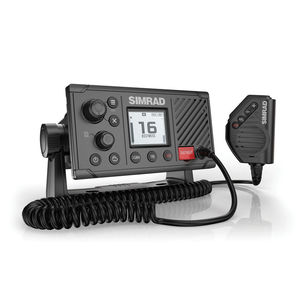
- Equipment
- Marine Electronics
- Boat AIS
- Simrad Yachting

- Company
- Products
- Catalogs
- News & Trends
- Exhibitions
Boat AIS NAIS-500transponderclass B
Add to favorites
Compare this product
Characteristics
- Application domain
- for boats
- Type
- transponder, class B
Description
Reduce your risk of collision with this fully integrated, Class-B AIS transponder - essential for navigating today’s busy shipping lanes and congested ports. Compact in size, lightweight, fully waterproof, with low power draw and featuring multiple connections, the NAIS 500 is ideal for networking with any NSS, NSO, or GO series chartplotter / multifunction display and Simrad RS VHF system.
Product details
Class-B Approved
Meets with the strict regulations set out for this class of Automatic Identification System.
Send & Receive
The NAIS 500 ensures that you are seen and can see on the water by sending a signal to other vessels with your navigational data, whilst you receive data from other vessels. This allows you to plan any necessary avoidance manoeuvres well in advance.
Integrated Solution
Networks with your NSS, NSO, or GO series chartplotter / multifunction display and your marine VHF radio for a fully integrated system.
Multiple Networking Connections
Compatible with NMEA 2000®, NMEA 0183®, NMEA 0183® multiplexing and USB.
Waterproof
IPX7 standard.
Lightweight
Just 250 grams.
Low Power Consumption
The NAIS 500 features a low average power consumption of 180 mA at 12 VDC.
Catalogs
Smirad 2024 Catalogue
44 Pages
*Prices are pre-tax. They exclude delivery charges and customs duties and do not include additional charges for installation or activation options. Prices are indicative only and may vary by country, with changes to the cost of raw materials and exchange rates.




